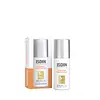What's inside
What's inside
 Key Ingredients
Key Ingredients

 Benefits
Benefits

 Concerns
Concerns

 Ingredients Side-by-side
Ingredients Side-by-side

Water
Skin ConditioningPropanediol
SolventDibutyl Adipate
EmollientEthylhexyl Salicylate
UV AbsorberEthylhexyl Triazone
UV AbsorberBis-Ethylhexyloxyphenol Methoxyphenyl Triazine
Skin ConditioningDimethicone
EmollientButyl Methoxydibenzoylmethane
UV AbsorberPhenylbenzimidazole Sulfonic Acid
UV AbsorberSilica
AbrasiveDiisopropyl Sebacate
EmollientArginine
MaskingUndecane
EmollientPentylene Glycol
Skin ConditioningGlycerin
HumectantTridecane
PerfumingButylene Glycol
HumectantHydroxyacetophenone
AntioxidantLauryl PEG/PPG-18/18 Methicone
Skin ConditioningVp/Eicosene Copolymer
Polysorbate 60
EmulsifyingDimethicone/Vinyl Dimethicone Crosspolymer
Skin ConditioningSodium Polyacrylate Starch
AbsorbentCaprylyl Glycol
EmollientHydrated Silica
AbrasiveTocopheryl Acetate
AntioxidantPEG-10 Dimethicone
Skin ConditioningTetrasodium Glutamate Diacetate
Parfum
MaskingSclerotium Gum
Emulsion StabilisingSodium Hyaluronate
HumectantXanthan Gum
EmulsifyingCarbomer
Emulsion StabilisingPolysorbate 20
EmulsifyingSodium Lactate
BufferingPhenoxyethanol
PreservativeSodium Benzoate
MaskingLecithin
EmollientPlankton Extract
Skin ConditioningTocopherol
AntioxidantPalmitoyl Tripeptide-1
Skin ConditioningPalmitoyl Tetrapeptide-7
Skin ConditioningPentapeptide-34 Trifluoroacetate
EmollientWater, Propanediol, Dibutyl Adipate, Ethylhexyl Salicylate, Ethylhexyl Triazone, Bis-Ethylhexyloxyphenol Methoxyphenyl Triazine, Dimethicone, Butyl Methoxydibenzoylmethane, Phenylbenzimidazole Sulfonic Acid, Silica, Diisopropyl Sebacate, Arginine, Undecane, Pentylene Glycol, Glycerin, Tridecane, Butylene Glycol, Hydroxyacetophenone, Lauryl PEG/PPG-18/18 Methicone, Vp/Eicosene Copolymer, Polysorbate 60, Dimethicone/Vinyl Dimethicone Crosspolymer, Sodium Polyacrylate Starch, Caprylyl Glycol, Hydrated Silica, Tocopheryl Acetate, PEG-10 Dimethicone, Tetrasodium Glutamate Diacetate, Parfum, Sclerotium Gum, Sodium Hyaluronate, Xanthan Gum, Carbomer, Polysorbate 20, Sodium Lactate, Phenoxyethanol, Sodium Benzoate, Lecithin, Plankton Extract, Tocopherol, Palmitoyl Tripeptide-1, Palmitoyl Tetrapeptide-7, Pentapeptide-34 Trifluoroacetate
Water
Skin ConditioningPropylene Glycol
HumectantEthylhexyl Methoxycinnamate
UV AbsorberBis-Ethylhexyloxyphenol Methoxyphenyl Triazine
Skin ConditioningMethylene Bis-Benzotriazolyl Tetramethylbutylphenol
UV FilterIsododecane
EmollientCetyl Alcohol
EmollientAmmonium Acryloyldimethyltaurate/Vp Copolymer
Phenoxyethanol
PreservativeDecyl Glucoside
CleansingHydrogenated Lecithin
EmulsifyingXanthan Gum
EmulsifyingChlorphenesin
AntimicrobialCoco-Glucoside
CleansingGlycerin
HumectantHydroxyethylcellulose
Emulsion StabilisingBisabolol
MaskingDisodium EDTA
Helianthus Annuus Seed Oil
EmollientTocopheryl Acetate
AntioxidantEthyl Ferulate
AntioxidantPolyglyceryl-5 Trioleate
EmollientSodium Hyaluronate
HumectantRosmarinus Officinalis Leaf Extract
AntimicrobialMoringa Oleifera Seed Extract
Skin ConditioningDisodium Uridine Phosphate
Skin ConditioningWater, Propylene Glycol, Ethylhexyl Methoxycinnamate, Bis-Ethylhexyloxyphenol Methoxyphenyl Triazine, Methylene Bis-Benzotriazolyl Tetramethylbutylphenol, Isododecane, Cetyl Alcohol, Ammonium Acryloyldimethyltaurate/Vp Copolymer, Phenoxyethanol, Decyl Glucoside, Hydrogenated Lecithin, Xanthan Gum, Chlorphenesin, Coco-Glucoside, Glycerin, Hydroxyethylcellulose, Bisabolol, Disodium EDTA, Helianthus Annuus Seed Oil, Tocopheryl Acetate, Ethyl Ferulate, Polyglyceryl-5 Trioleate, Sodium Hyaluronate, Rosmarinus Officinalis Leaf Extract, Moringa Oleifera Seed Extract, Disodium Uridine Phosphate
Ingredients Explained
These ingredients are found in both products.
Ingredients higher up in an ingredient list are typically present in a larger amount.
You might know this ingredient as Tinosorb S or Bemotrizinol. It is a UV filter that covers both UVA and UVB rays.
This ingredient has two peak UV absorption peaks ( 310 and 340 nm) and is able to absorb both UV-A and UV-B rays. This ingredient works by preventing UV rays from reaching and damaging your skin.
On top of that - it is highly photostable and helps prevent the photodegration of other sunscreen ingredients such as avobenzone.
Tinosorb S is allowed in the EU, Australia, and Asia. It is close to being approved by the FDA and we'll hopefully get this ingredient in the U.S. by late 2025.
Fun fact: Tinosorb S is the most effective UV absorber at maximum concentration (measured by SPF) permitted in the EU.
This ingredient is oil-soluble, so your oil-cleansers will take this right off at night.
Learn more about Bis-Ethylhexyloxyphenol Methoxyphenyl TriazineGlycerin is already naturally found in your skin. It helps moisturize and protect your skin.
A study from 2016 found glycerin to be more effective as a humectant than AHAs and hyaluronic acid.
As a humectant, it helps the skin stay hydrated by pulling moisture to your skin. The low molecular weight of glycerin allows it to pull moisture into the deeper layers of your skin.
Hydrated skin improves your skin barrier; Your skin barrier helps protect against irritants and bacteria.
Glycerin has also been found to have antimicrobial and antiviral properties. Due to these properties, glycerin is often used in wound and burn treatments.
In cosmetics, glycerin is usually derived from plants such as soybean or palm. However, it can also be sourced from animals, such as tallow or animal fat.
This ingredient is organic, colorless, odorless, and non-toxic.
Glycerin is the name for this ingredient in American English. British English uses Glycerol/Glycerine.
Learn more about GlycerinPhenoxyethanol is a preservative that has germicide, antimicrobial, and aromatic properties. Studies show that phenoxyethanol can prevent microbial growth. By itself, it has a scent that is similar to that of a rose.
It's often used in formulations along with Caprylyl Glycol to preserve the shelf life of products.
Sodium Hyaluronate is hyaluronic acid's salt form. It is commonly derived from the sodium salt of hyaluronic acid.
Like hyaluronic acid, it is great at holding water and acts as a humectant. This makes it a great skin hydrating ingredient.
Sodium Hyaluronate is naturally occurring in our bodies and is mostly found in eye fluid and joints.
These are some other common types of Hyaluronic Acid:
Learn more about Sodium HyaluronateTocopheryl Acetate is AKA Vitamin E. It is an antioxidant and protects your skin from free radicals. Free radicals damage the skin by breaking down collagen.
One study found using Tocopheryl Acetate with Vitamin C decreased the number of sunburned cells.
Tocopheryl Acetate is commonly found in both skincare and dietary supplements.
Learn more about Tocopheryl AcetateWater. It's the most common cosmetic ingredient of all. You'll usually see it at the top of ingredient lists, meaning that it makes up the largest part of the product.
So why is it so popular? Water most often acts as a solvent - this means that it helps dissolve other ingredients into the formulation.
You'll also recognize water as that liquid we all need to stay alive. If you see this, drink a glass of water. Stay hydrated!
Learn more about WaterXanthan gum is used as a stabilizer and thickener within cosmetic products. It helps give products a sticky, thick feeling - preventing them from being too runny.
On the technical side of things, xanthan gum is a polysaccharide - a combination consisting of multiple sugar molecules bonded together.
Xanthan gum is a pretty common and great ingredient. It is a natural, non-toxic, non-irritating ingredient that is also commonly used in food products.
Learn more about Xanthan Gum